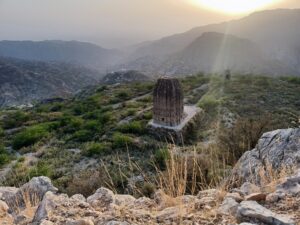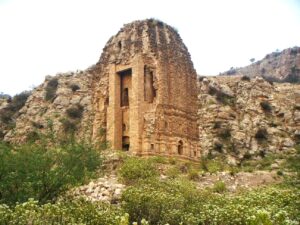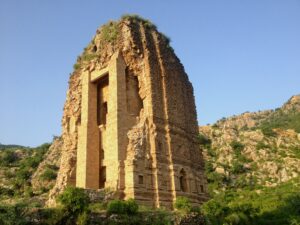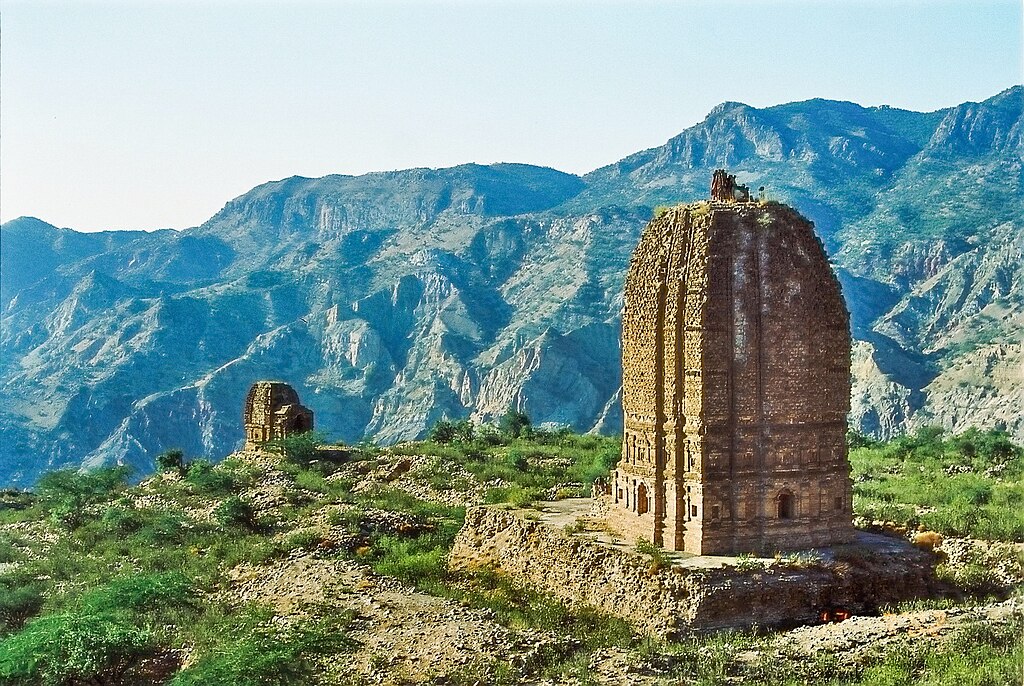🛕 Introduction
Nestled in the remote hills of Khushab District in Punjab, Pakistan, the Amb Temples—also known as the Amb Sharif Temples—stand as ancient remnants of Hindu civilization that once flourished in the region. These stone structures are among the few surviving examples of early Hindu temple architecture in present-day Pakistan, offering a rare and powerful glimpse into the religious and cultural history of the Indian subcontinent prior to Islamic influence.
📜 Historical Background
The Amb Temples date back to approximately the 7th to 9th century CE, a time when the Hindu Shahi dynasty ruled large parts of what is now Afghanistan and Pakistan. This period saw the patronage of Hindu art, architecture, and learning, particularly in regions like Gandhara and the Salt Range.
According to archaeologists and historians, the temples were likely constructed during the reign of the Hindu Shahis, who were known for building fortified temples in elevated, strategic locations. The temples were part of a larger network of sacred sites spread across the Salt Range, including the Katas Raj Temples and others.
🏛️ Architecture and Design
The main Amb Temple is perched on a high hill and features:
-
A stone tower (shikhara) typical of North Indian Nagara-style architecture
-
A square sanctum (garbhagriha) that once housed the deity’s idol
-
Intricate carvings and moldings along the doorway and outer walls
Despite centuries of exposure to the elements and neglect, the structural design has remained remarkably intact, demonstrating the skilled craftsmanship and architectural foresight of its builders.
Some features resemble early Kashmiri temples, such as those found in Martand and Pandrethan, suggesting cultural and artistic exchanges between regions of northern India and what is now northern Pakistan.
🧭 Location and Accessibility
The temples are located near the village of Amb Sharif, about 15 kilometers from the town of Qaidabad in Khushab District. The terrain is rugged, and reaching the site typically involves trekking through hilly landscapes, making it an ideal destination for history enthusiasts and adventure travelers alike.
Though relatively isolated, the temples have been visited by archaeologists, photographers, and scholars interested in South Asian religious heritage.
🛡️ Cultural and Archaeological Significance
The Amb Temples are among the very few Hindu temples that survive in Pakistan outside of Sindh. They represent:
-
The religious pluralism that once characterized ancient Punjab
-
The architectural ingenuity of early Hindu civilizations
-
The shared cultural heritage of India and Pakistan
These temples are protected under the Antiquities Act of Pakistan, but they remain largely unpreserved and unknown to the general public. Conservation efforts are minimal, and accessibility is a challenge, though awareness is slowly growing among academics and heritage activists.
🕉️ A Vanished Era Remembered
In a country where most pre-Islamic heritage has been lost, repurposed, or erased, the Amb Temples stand as silent witnesses to a bygone era. They remind us that the land now called Pakistan was once home to a diverse spiritual and cultural mosaic, including Hinduism, Buddhism, and Jainism, all of which left indelible marks on the landscape.
For South Asians on both sides of the border, the Amb Temples are a shared legacy—one that transcends modern political boundaries.
📣 Conclusion
The Amb Temples are not just crumbling stones on a hill—they are timeless testaments to ancient faith, art, and history. In an age where preserving cultural memory is more important than ever, these temples deserve greater recognition, documentation, and protection.
For scholars, spiritual seekers, and history lovers, the Amb Temples offer a rare portal into the sacred geography of early Hindu civilization in what is now Pakistan.









